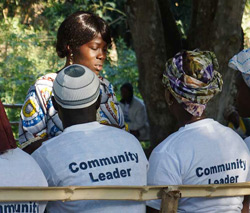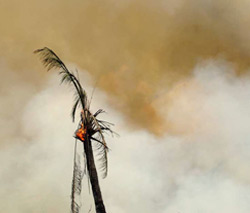Our inside-out approach to building peace is hands-on and hard-won in real-world situations. Guided by our vision and our core assumptions, we have developed our practice based on what works on the ground. We have built our theory from that—not the other way around.
We believe that the best way to learn how to do something is often simply to do it.
And the best way to teach something is often to invite others to do it and to walk alongside them in the process. So we have used our platform to create a space for local leaders to build peace in their communities, and to do it strategically and sustainably, while we commit to accompanying them in that process. We work to keep the way clear and the communication channels open⎯so that they can lead the work themselves.
We see ourselves, above all, as learners. We have worked in a recurring cycle of action, learning, and sharing, to support real-world, responsive programs, that continue to grow in strength and impact.
We have applied our inside-out approach to peacebuilding, storytelling, funding peace and leadership development. Each represents its own leverage point for building peace, and each also represents an interlocking part of a larger whole. Together, they become key components of a successful and sustainable inside-out system of peace:
- Peacebuilding – Building peace from the inside out has meant going local and long-term – cultivating new structures, processes, and values that support sustainable local ownership and leadership at every step and at every level.
- Storytelling – Our inside-out lens has helped us discover new stories to tell as well as to live into. Multi-media sharing of those stories through compelling narrative has been critical to magnifying the work on the ground and to touching the hearts of those far away.
- Funding Peace – Directing funds to release potential and to mobilize capacity, instead of simply to meet needs or to stop problems, we have helped unleash new resources in the areas we work, creating a mutuality of giving and receiving between donor and grantee.
- Leadership Development – We see leadership in non-traditional places, and we work proactively to draw it out, with ongoing attention to discerning and living into deeper purpose and calling. We invite and invest in people focused on serving the community, who in turn work to create and empower other leaders.
- Ebola Response – In our experience with Ebola response, we saw how investing long-term and local leaves a legacy of healthy communities, more capable of leading in their own development and peace, and in turn of responding to a new crisis. With local individual and community voices at the center in crisis response, external support can not only have more immediate impact, but it can have a legacy beyond burned out donors or depleted communities.
Home page and current page banner image (c) Sara Terry for Catalyst for Peace





